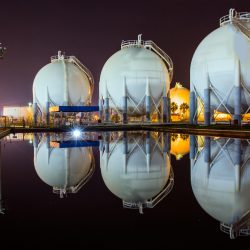This article originally appeared in the World Business Academy’s monthly publication Currents in Commerce. Join our mailing list to receive Currents in your inbox.
“Spurred mainly by rising demand in China and India, coal’s share in the global primary energy mix reached 28% in 2011—-its highest point since the International Energy Agency began keeping statistics in 1971.” Global coal consumption grew by 5.4% from 2010 to 2011, while natural gas consumption grew by 2.2%.
About 70% of global coal use is from non-OECD countries.
Is Natural Gas Really Better Than Coal?
New scientific research shows alarmingly high methane emissions from natural gas fields, underscoring concerns about the rush to natural gas. Researchers’ preliminary findings showed 9% of total natural gas production in a Utah field was lost to leakage—”nearly double the cumulative loss rates estimated from industry data.” Researchers also confirmed a 4% leakage rate in a Colorado field.
“If these findings are replicated elsewhere, they would utterly vitiate the climate benefit of natural gas, even when used to switch off coal,” as Joe Romm writes. A study last year that “found that if total leakage exceeds 3.2% ‘gas becomes worse for the climate than coal for at least some period of time.'”
“Fracking the Future: How Unconventional Gas Threatens our Water, Health and Climate,” a report from DeSmogBlog, lays out the problems with the rush to natural gas as either a “bridge fuel” to cleaner energy or as a longer term energy option. Some U.S. medical doctors have called for a moratorium on hydraulic fracking for natural gas in populated areas until the health effects are better understood, Bloomberg News reports.

